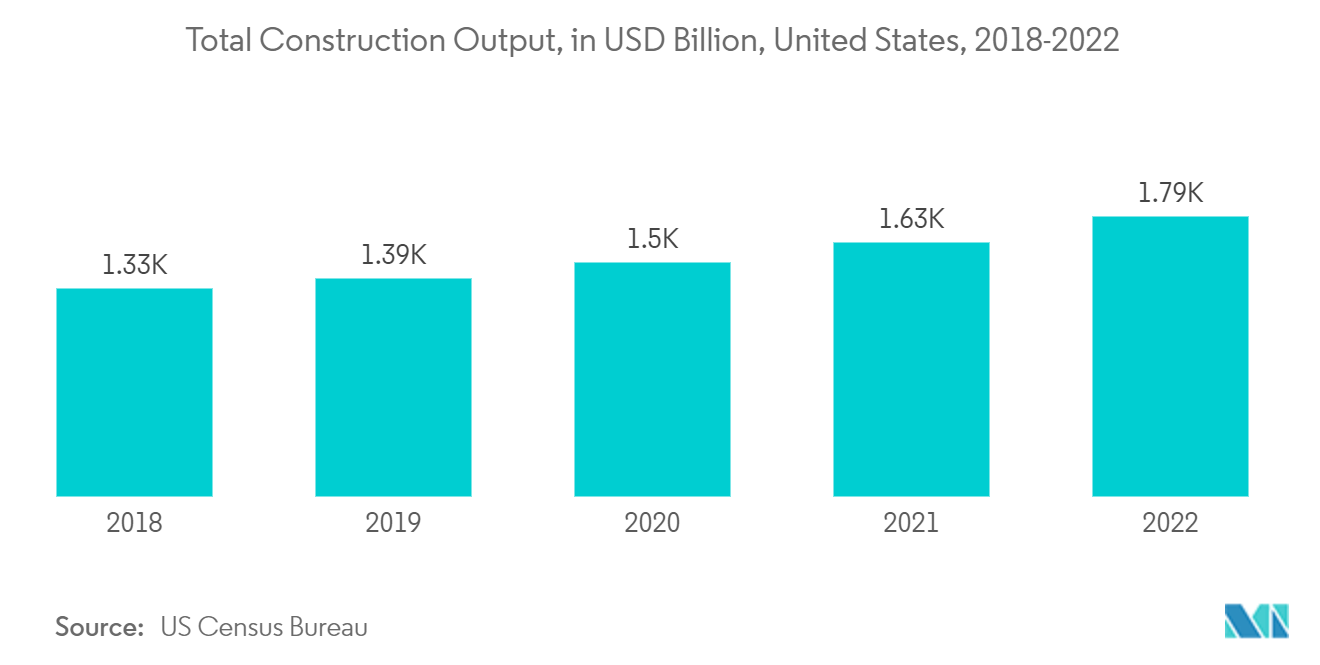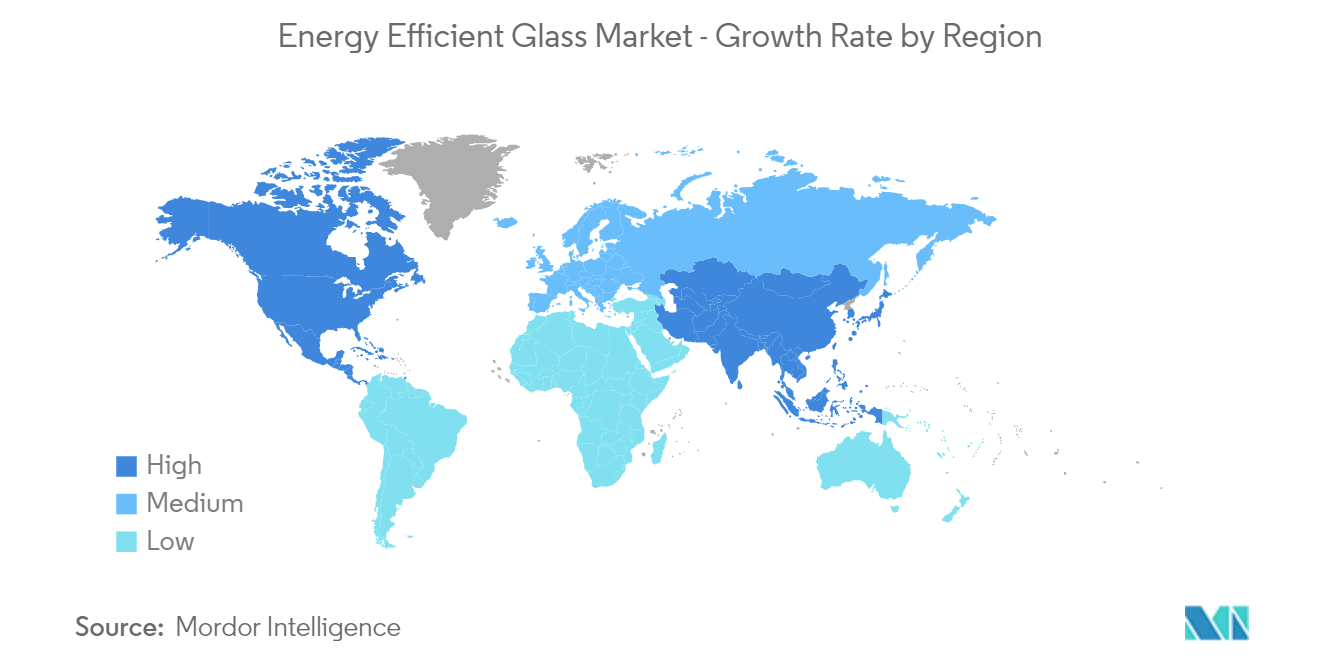Market Trends of Energy-efficient Glass Industry
Growing Demand from the Building and Construction Sector
- Energy-efficient glasses are incorporated with coatings (low-emissivity) to prevent the passing of heat through the windows. This makes the windows thermally insulated and hence improves the energy efficiency of a home, thereby helping save money on heating bills.
- In the building and construction sector, these glasses are used to improve energy efficiency. Windows, doors, conservatories, and roof lights can all benefit from the use of energy-efficient glasses by retaining the heat and thereby conserving energy.
- Asia-Pacific and North America are the largest construction markets in the world. Furthermore, according to Oxford Economics, the global construction output is expected to grow by more than USD 4.2 trillion over the next 15 years, from USD 9.7 trillion in 2022 to USD 13.9 trillion in 2037, with China, the United States, and India accounting for 51% of all the construction work.
- According to the National Bureau of Statistics of China, the value of construction output accounted for CNY 31.2 trillion (USD 4.5 trillion) in 2022, up from CNY 29.3 trillion (USD 4.2 trillion) in 2021. China is expected to spend nearly USD 13 trillion on buildings by 2030, thereby providing demand for energy-efficient glass over the period.
- In North America, the United States has a major share in the construction industry. Besides the United States, Canada and Mexico contribute significantly to the construction sector investments. The annual value of residential construction in the United States was valued at USD 908 billion in 2022, an increase of 13% compared to USD 803 billion in 2021.
- The French government's initiatives to develop the city for hosting the 2024 Olympics are likely to drive the market. For instance, the French government sanctioned approximately USD 3.3 billion for the construction of the Hermitage towers (two 320-meter-1050-foot towers), which are due to be completed by 2024. The essential infrastructure for the Olympic event requires building 4,500 new dwellings for local people, 100,000 square meters for business activities, and 20,000 new hotel rooms for tourists.
- Growing construction activity coupled with increasing concern toward energy conservation is driving the market for energy-efficient glasses during the forecast period.

Europe Region to Dominate the Market
- Europe is expected to dominate the global market for energy-efficient glass, owing to the growing construction industry in countries such as the United Kingdom, Germany, Italy, and France.
- The largest producers of energy-efficient glasses are located in Europe. Some of the leading companies in the manufacture of energy-efficient glasses are Saint-Gobain, Nippon Sheet Glass Co., Ltd, AGC Glass Europe, and Morley Glass & Glazing Ltd, among others.
- Low-emissivity glass is a type of energy-efficient glass designed to prevent heat from escaping through the windows. Low-E glass has an invisible coating, which dramatically reduces heat transfer and reflects interior heat into the room.
- According to Eurostat, the European construction sector grew by 2.5% in 2022 due to new investments from the EU Recovery Fund. The major construction projects in 2022 accounted for non-residential construction (offices, hospitals, hotels, schools, and industrial buildings), accounting for 31.3% of total activity.
- Germany has the largest construction industry in Europe. The German government has allocated around EUR 375 billion (~USD 409.17 billion) in construction activities in the coming years. In addition, it also revealed plans to build 250,000 to 400,000 housing units, making this project a great investment opportunity for the city, private developers, and public housing authorities, hence increasing the scope of the energy-efficient glass market.
- Using energy-efficient glasses in windows or doors reduces the home’s CO2 output, making the carbon footprint smaller and more environmentally friendly.
- Furthermore, the high-efficiency transparent glass used in solar panels helps in the generation of power from various new applications, such as solar windows, building glasses, cars sunroof, and other such structures. When a solar glass is transparent, the sunlight may pass through the medium and defeat the purpose of utilizing sunlight. However, this new solar panel technology is changing the way solar cells absorb light.
- Building Integrated Photovoltaics (BIPV) systems, which are used in windows, are integrated within a building’s envelope. This provides dual benefits: the clear solar glass serves as an energy-efficient window product for any building and also generates electricity for on-site use or export to the grid.
- According to the Statistical Review of World Energy report, Europe accounts for 22.5% of the world's installed solar power capacity in 2022, which accounted for 236.96 gigawatts, an increase of 19.8% compared to last year, with Germany, Itlay, and Spain being the leading producers.
- Thus, these factors above, coupled with government support, are contributing to the increasing demand for energy-efficient glasses and are expected to increase during the forecast period.


